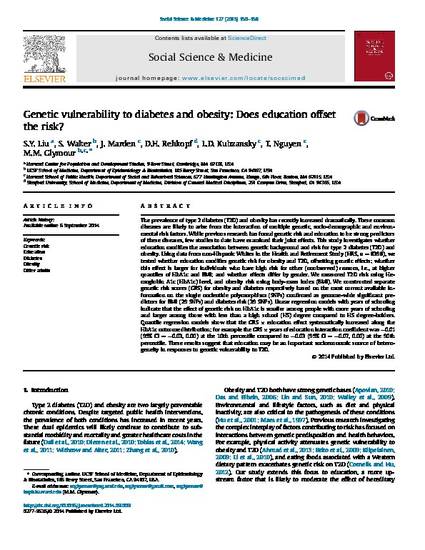
The prevalence of type 2 diabetes (T2D) and obesity has recently increased dramatically. These common diseases are likely to arise from the interaction of multiple genetic, socio-demographic and environmental risk factors. While previous research has found genetic risk and education to be strong predictors of these diseases, few studies to date have examined their joint effects. This study investigates whether education modifies the association between genetic background and risk for type 2 diabetes (T2D) and obesity. Using data from non-Hispanic Whites in the Health and Retirement Study (HRS, n = 8398), we tested whether education modifies genetic risk for obesity and T2D, offsetting genetic effects; whether this effect is larger for individuals who have high risk for other (unobserved) reasons, i.e., at higher quantiles of HbA1c and BMI; and whether effects differ by gender. We measured T2D risk using Hemoglobin A1c (HbA1c) level, and obesity risk using body-mass index (BMI). We constructed separate genetic risk scores (GRS) for obesity and diabetes respectively based on the most current available information on the single nucleotide polymorphism (SNPs) confirmed as genome-wide significant predictors for BMI (29 SNPs) and diabetes risk (39 SNPs). Linear regression models with years of schooling indicate that the effect of genetic risk on HbA1c is smaller among people with more years of schooling and larger among those with less than a high school (HS) degree compared to HS degree-holders. Quantile regression models show that the GRS × education effect systematically increased along the HbA1c outcome distribution; for example the GRS × years of education interaction coefficient was −0.01 (95% CI = −0.03, 0.00) at the 10th percentile compared to −0.03 (95% CI = −0.07, 0.00) at the 90th percentile. These results suggest that education may be an important socioeconomic source of heterogeneity in responses to genetic vulnerability to T2D.
Available at: http://works.bepress.com/syliu/5/
